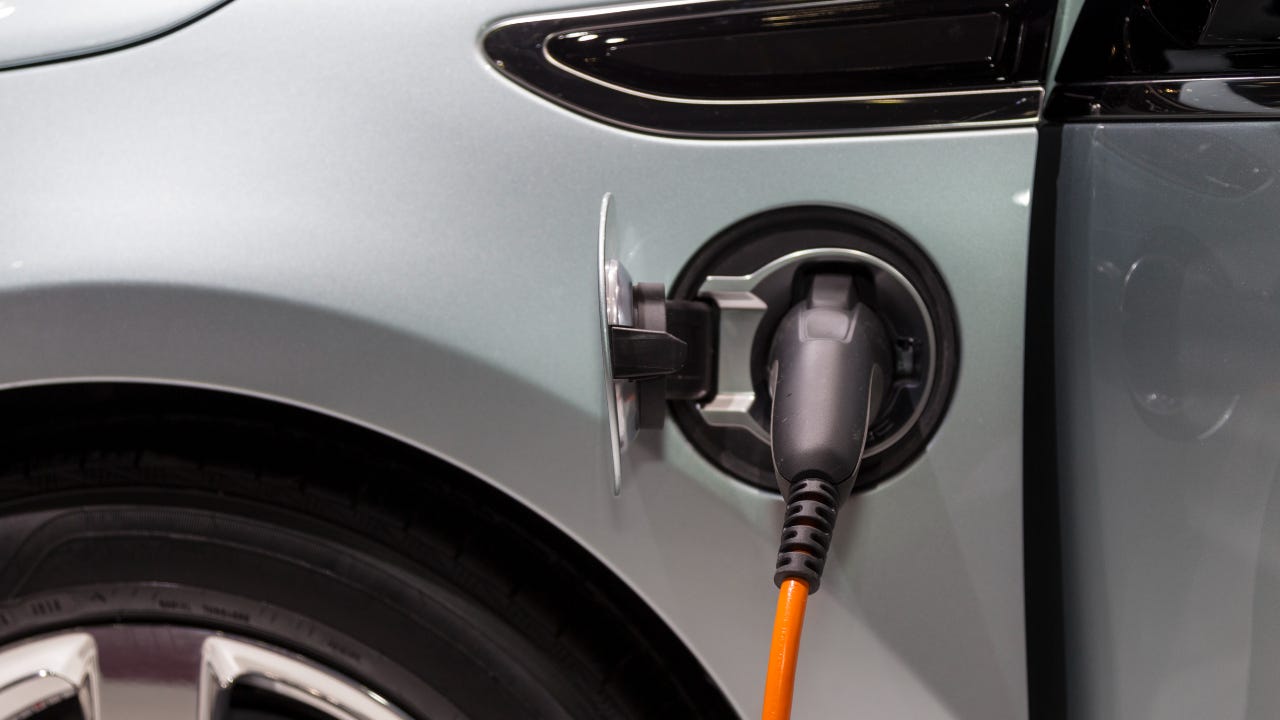EV tax credit: What to know before you buy

Key takeaways
- EV tax credits can now be secured at the point of sale rather than just when filing taxes.
- Your vehicle must meet several standards, such as model year, vehicle parts and cost, to receive the full available tax credit.
- When deciding if driving an electric car is right for your needs, consider your driving habits, budget and access to chargers.
Driving electric is no longer just for climate-conscious car buyers. The EV market has experienced dramatic growth over the past few years, with more than 8.7 percent of new retail registrations coming from EV buyers in 2024, according to Experian.
At the same time, electric vehicle options continue to diversify and now include a wide selection of styles, financing options and price points. Driving electric also comes with many money-saving perks. Besides the obvious — saving on the cost of gas — there are currently electric car tax credits for those who purchase an electric vehicle. Depending on your home state, owning an electric vehicle can save you thousands.
However, there are fewer EV vehicles eligible for these benefits since battery sourcing requirements went into effect. On top of that, EV credits are likely to be repealed under the Trump administration. This may take time, as Congressional approval is required, so EV shoppers may want to take advantage of the credit while they can.
What is the EV tax credit?
The EV tax credit is a financial incentive built by the government to encourage drivers to purchase an electric car. As Liz Najman, Director of Market Insights at Recurrent Auto explains, “The EV tax credit has been around for a while, and it was reinvigorated starting in 2023 with the Inflation Reduction Act. This updated legislation is a way for the government to stimulate growth in the clean vehicle segment, to bring important high-tech manufacturing and jobs back to the US, and to meet worldwide climate goals.”
This incentive is not a check you receive in the mail following a vehicle purchase, but rather a tax credit worth up to $7,500 that you become eligible for. This credit applies to all-electric, plug-in and fuel cell vehicles that meet the requirements, but specific credit amounts can be found on the IRS’ website, IRS.gov.
It is also important to remember that purchasing the vehicle alone does not ensure that you get the tax credit. You must file Form 8936 with the IRS.
Used EV tax credits
Drivers who may not be able to afford a brand-new EV can still benefit from the tax credit. When buying a used electric vehicle costing up to $25,000, drivers can receive a tax credit of up to 30 percent of the purchase price, with a $4,000 cap.
Once you find a used vehicle that meets these requirements, you can the credit toward the amount you pay or claim it when you file your tax return. However, it is recommended that you use the tax credit as your vehicle down payment. A larger down payment can dramatically reduce your monthly car payment and with more used EVs on the market, you can walk away with a great deal.
“The number of eligible vehicles has skyrocketed,” says Najman. “There’s really a lot of when you look at vehicles under that $25,000 price threshold, there’s a ton of availability.” she shares.
The 2022 Kia Niro EV, for example, averages just under $23,000, and with the credit, you can buy one for under $20,000 — a price tag you are strapped to find elsewhere.
Unfortunately, not every state offers EV tax credits and incentives. In fact, more than half of the states in the country do not have an EV tax credit program. So, before you set out to buy a charging station for your garage, determine how much you can save in your home state.
What’s new in 2025?
While the Trump administration plans to eliminate EV tax credits, that move will require approval from Congress. Despite the threat of elimination, Najman still sees momentum in the market and predicts sales to continue to grow even without incentives.
“Only 25% of new EV purchases were contingent on the Federal tax credit,” she says. “In other words, 75% of new EV buyers would have purchased anyway.”
She also points to the likelihood of repeat EV purchasers, saying that “recent surveys say that well over 90% of drivers who have gone electric plan to stay electric. In 2025 alone, there will be at least 120,000 EV drivers who will be trading in a lease—likely for another EV.”
The future of clean vehicle tax credits may be up in the air, but they’re still available in the present. That’s a good thing, considering the tariffs imposed by the new administration will make EVs—and many gas-powered new and used cars—more expensive.
EV shoppers can redeem their credits at the dealership’s point of sale instead of when they file their taxes, which can lower your out-of-pocket cost. Najman recommends using the credits at the point of sale for an additional benefit: to max out their value. “When used as a year-end tax credit, these incentives are non-refundable, so you can only claim as much as the value of their tax liability,” she says.
If you do want to use your credits at the dealership, you must work with one that is registered with the IRS for that type of transfer. It shouldn’t be too hard to find one in your area that can facilitate a seamless credit redemption process. According to the Department of Energy, over 9,500 dealers are registered with the IRS.
EV tax credit requirements
While the EV tax credits incentivize drivers to purchase EVs, not every type of driver or vehicle will result in a tax deduction. Consider the requirements that you and your future vehicle must have ahead of securing an auto loan for an EV purchase.
Vehicle cost
For a vehicle to qualify for the tax credit, it’s suggested retail price (MSRP) must be under a certain amount of money, depending on the vehicle.
- $25,000 or less for a used vehicle.
- $80,000 or less for new vans, sport utility vehicles and pickup trucks.
- $55,000 or less for other new vehicles.
The federal tax credit does not apply to those leasing electric vehicles, but you can try to negotiate the incentive into your lease agreement to lower your monthly payment.
Vehicle age
Depending on the age of your electric or hybrid vehicle, certain specifications must be met for it to qualify for available incentives.
Income
Your vehicle is not the only thing that needs to qualify for tax credits. Your income does, too. To qualify for the tax credit, your modified adjusted gross income must be:
- $300,000 or lower for married couples filing jointly or a surviving spouse.
- $225,000 or lower for heads of households.
- $150,000 or lower for all other filers.
If two members of the same household purchase electric vehicles for themselves, they can separately claim the credit for their individual cars. If the two buy an EV together, the credit may only be claimed once.
EV tax credits by vehicle brand
Wondering what vehicles qualify? Before you shop around, review the 2025 models that can earn the full tax credit and compare your options. The following vehicles qualify for the $7,500 tax credit as long as they are placed in service between January 1st and December 31st, 2025.
Remember that all vehicles have a maximum MSRP of $80,000 to be eligible for a credit, so some trims of these models may not qualify.
Tax credits and incentives by state
Check out available incentives in your state before deciding to buy an electric vehicle. In California, some incentives may only be available in specific counties.
Bottom line
If the time to purchase a new set of wheels is upon you, consider buying a new or used electric vehicle to help address climate change and benefit from EV tax credits and incentives. Before deciding on a particular EV, do your homework and investigate whether there are tax credits still available.
It’s also important to look into the availability of charging stations in your area and, depending on how you plan to use the vehicle, confirm the battery range of the EV you’re interested in.
When it comes time to find financing and insurance, compare rates and differing costs for buying EVs over traditional ones.






